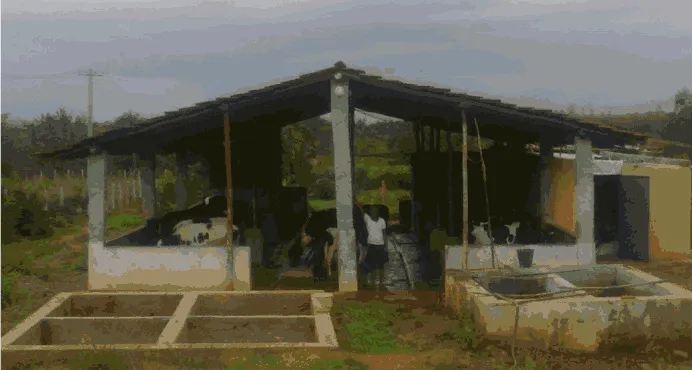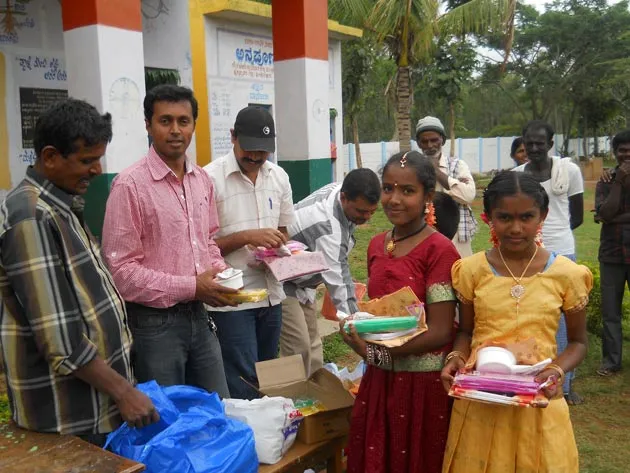Journey from IT to dairy farming: Santhosh D. Singh, Founder, Amrutha Dairy Farms

The beginning
After completing my post-graduation from Bangalore, I spent the first decade of my work life in the information technology industry, working for IT majors like Dell, and America Online. Those were the heydays of IT in India, and I got an opportunity to travel the globe as part of work. These travels exposed me to various possibilities of making money while being engaged in an enterprise which would take me closer to nature not just on weekends but all through the week. Thus began my quest to venture into the dairy industry.
After getting my family on board about my decision to exit the corporate world, I immersed myself into conceptualising and giving shape to the dairy enterprise as it is today by leveraging my expertise around project management, process improvement, business intelligence, analytics, and resource management that i had accumulated over the years of professional life.

I decided to get into dairy farming, as this was a relatively stable and profitable business in the unpredictable world that is Indian agriculture sector. The switch from the confines of air-conditioned work spaces to the dairy farm exposed to the elements 24 X 7 has been a revealing and invigorating experience.
Since I had no background in farming, I enrolled for full term training at National Dairy Research Institute (NDRI). As part of my education, I stayed over in functioning dairy farms to get a first-hand feel of staying next to livestock and tending to them. These stays at farms and the training gave me the confidence that rearing cows was something I would love to do long term and is indeed a lucrative vocation.
Three cows, three acres
My dairy had its inception with the introduction of 3 cows into my three-acre farmland which was originally intended to serve as a weekend getaway from town. This was three years back. I commenced milk production and personally took care of feeding the cows, bathing them, milking and cleaning their sheds every day.
The original plan envisaged incrementally adding milch cows and stabilise at around 20 cows in the first year; with this in mind, I created an infrastructure for 20 cows. One of the NDRI trainers under whom I trained, on a visit to our farm, advised me to explore NABARD for technological support. My interaction with NABARD made me realise that, to fully leverage the resources being deployed, we need to scale up the operation to 100 heads of cattle; this would create a capacity for 1,500 lts of milk every day and was projected to have an annual turnover of over Rs 1 crore.

With the price of dairy products seeing year-on-year increase, over the past 5 years, the margins in the business are healthy. It was a great vote of confidence and an awesome confidence-booster when NABARD awarded Silver Medal for taking initiatives to get in to dairy farming. State Bank of Mysore came to fund this reworked project plan. With funding in place, I went full steam and installed the infrastructure to support 100 cows.
Drought, determination
Along the way, we had hiccups for which we had to find solutions. One of the unforeseen exigencies was the acute shortage of green fodder due to unseasonal rains leading to drought which lasted for 18 months; this led to an unprecedented, 10-fold raise, in the cost of green fodder. The impact was a significant dip in daily production, which in turn impacted our bottom line.
I had to exhaust my savings in order to tide over the disruption in cash flow and keep the operation going. In my quest to find the lasting solution I decided to set up arguably the first production unit of hydroponics which enables growing of 1 ton of green fodder / day in a controlled environment at significantly low cost in comparison to commercially procured green fodder
Thankfully, this year, rains have been bountiful, and coupled with hydroponics-produced fodder we are in a position to make up for lost ground by increasing the herd size and thereby upping the daily milk production. With the bank hesitating to extend further assistance, I am exploring other options to infuse rich capital to take my dairy enterprise to the next level.
Lessons that I learned could be a nice takeaway for new entrepreneurs. During the phase of drought (almost 18 months), many small-size dairy farms wound up operations by putting the blame on Mother Nature, and moved on with other interesting business ventures. But I was very determined to see and live the good times in dairy which were destined to happen, and I am happy today to see good rains all across the country. Staying focused with the objective always gives positive results.







